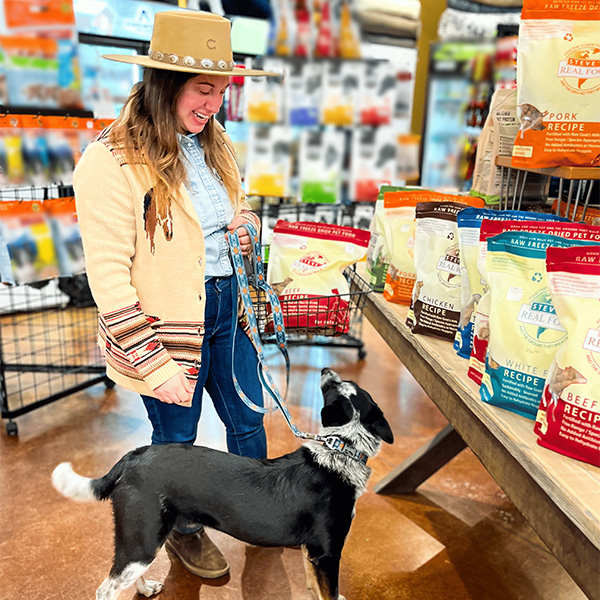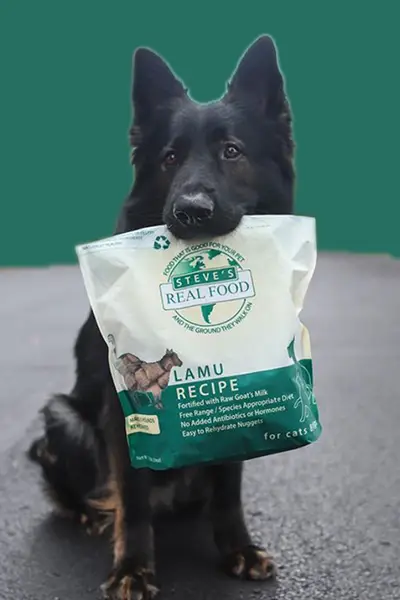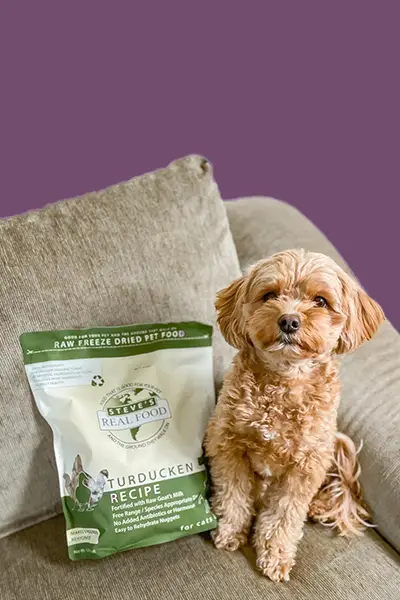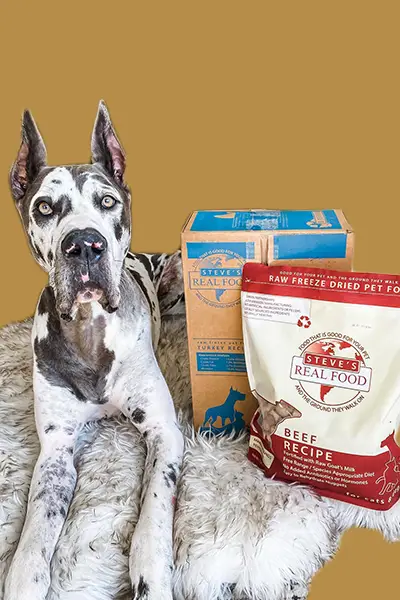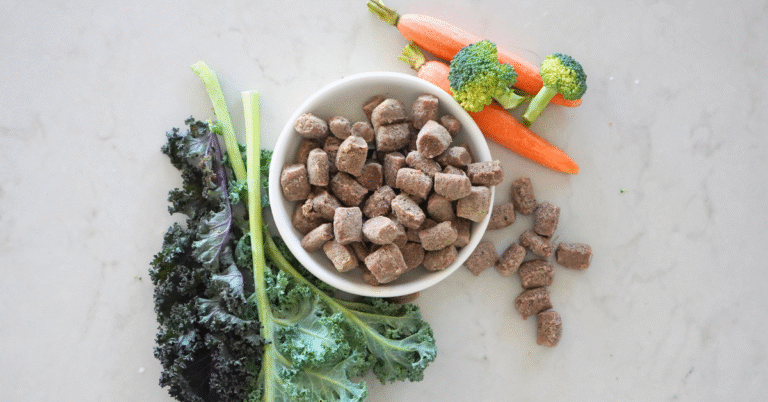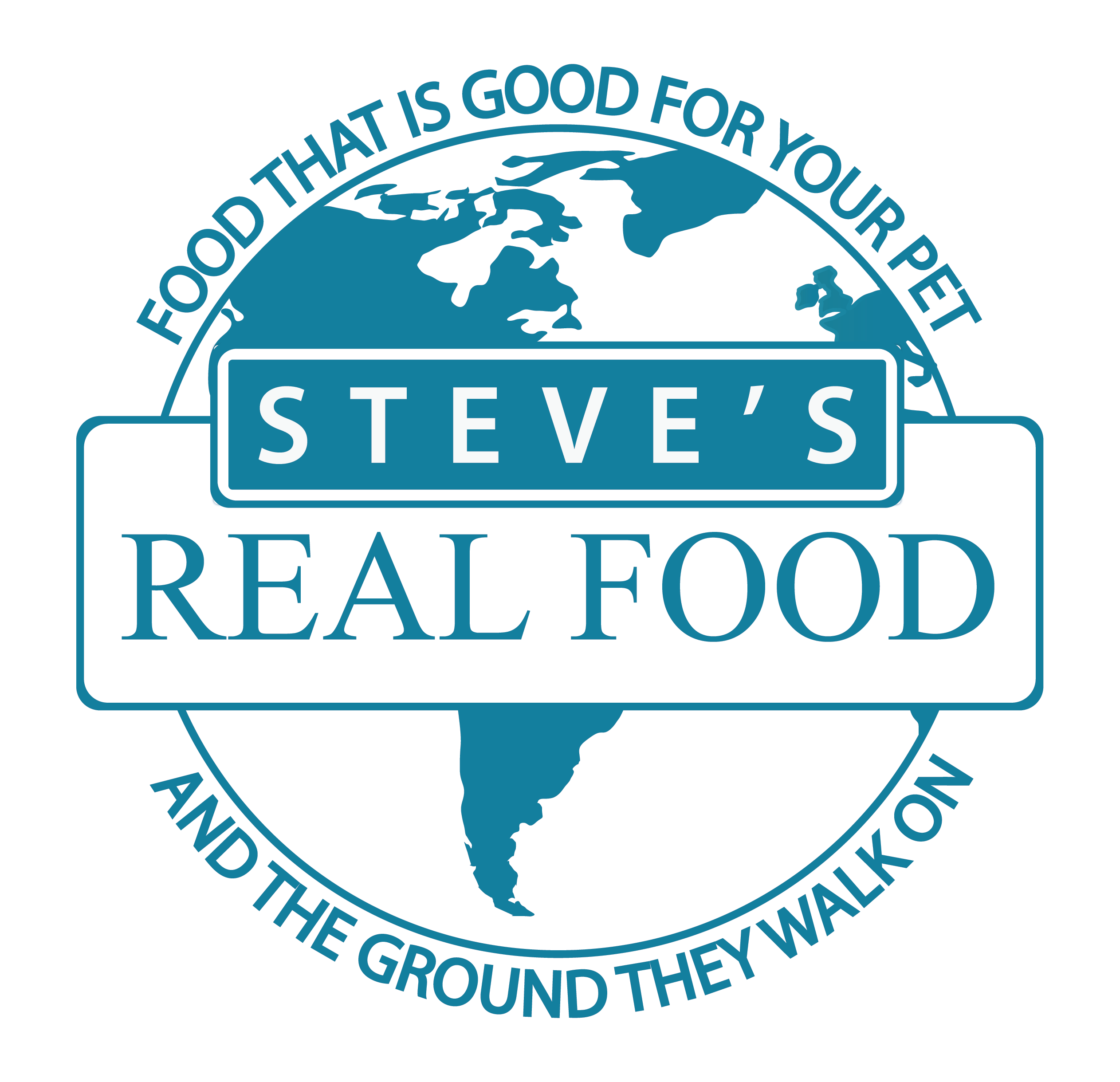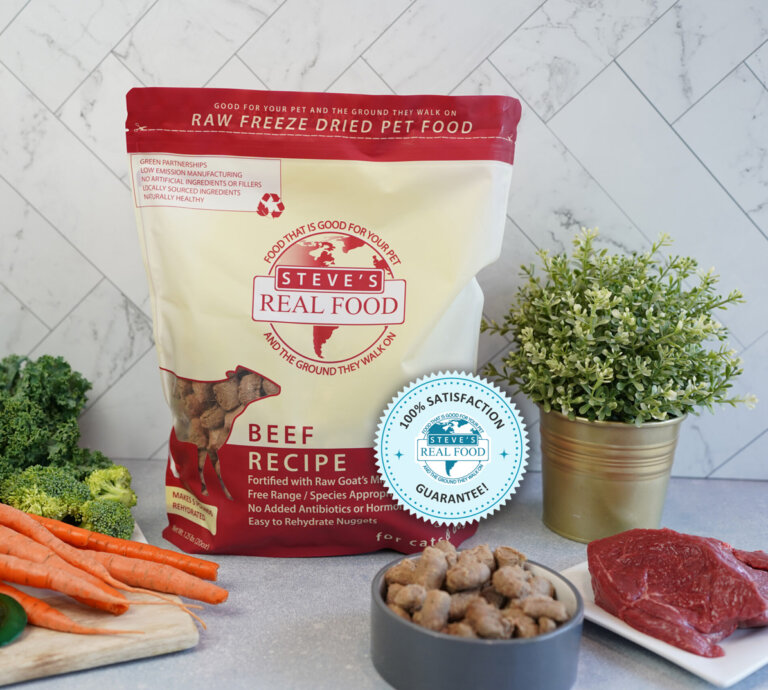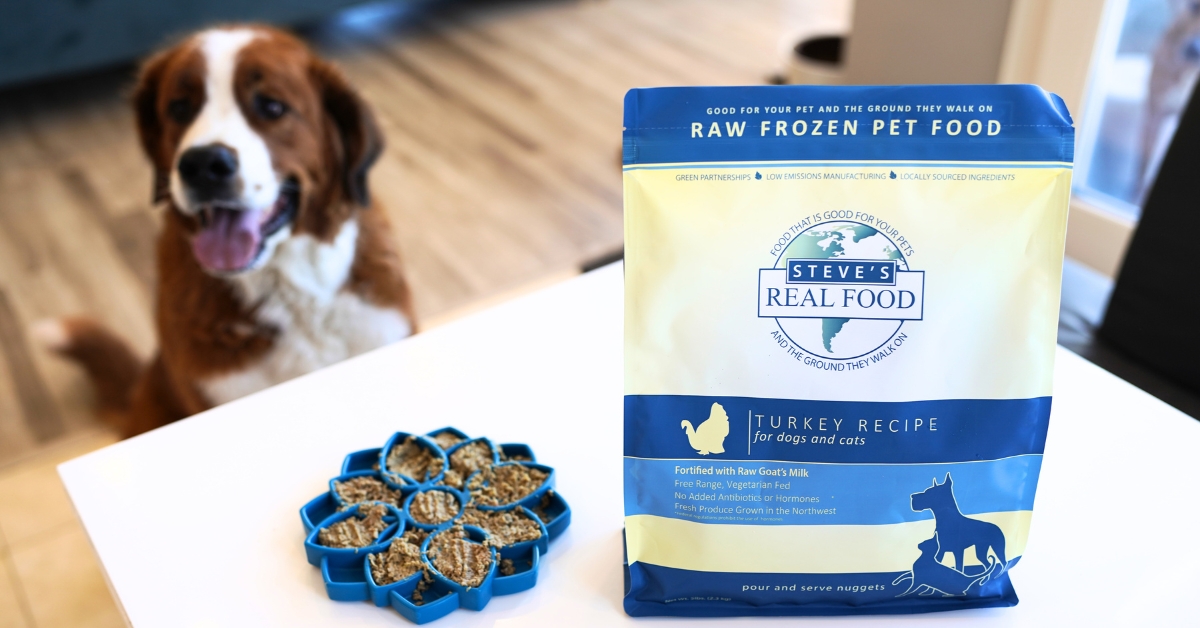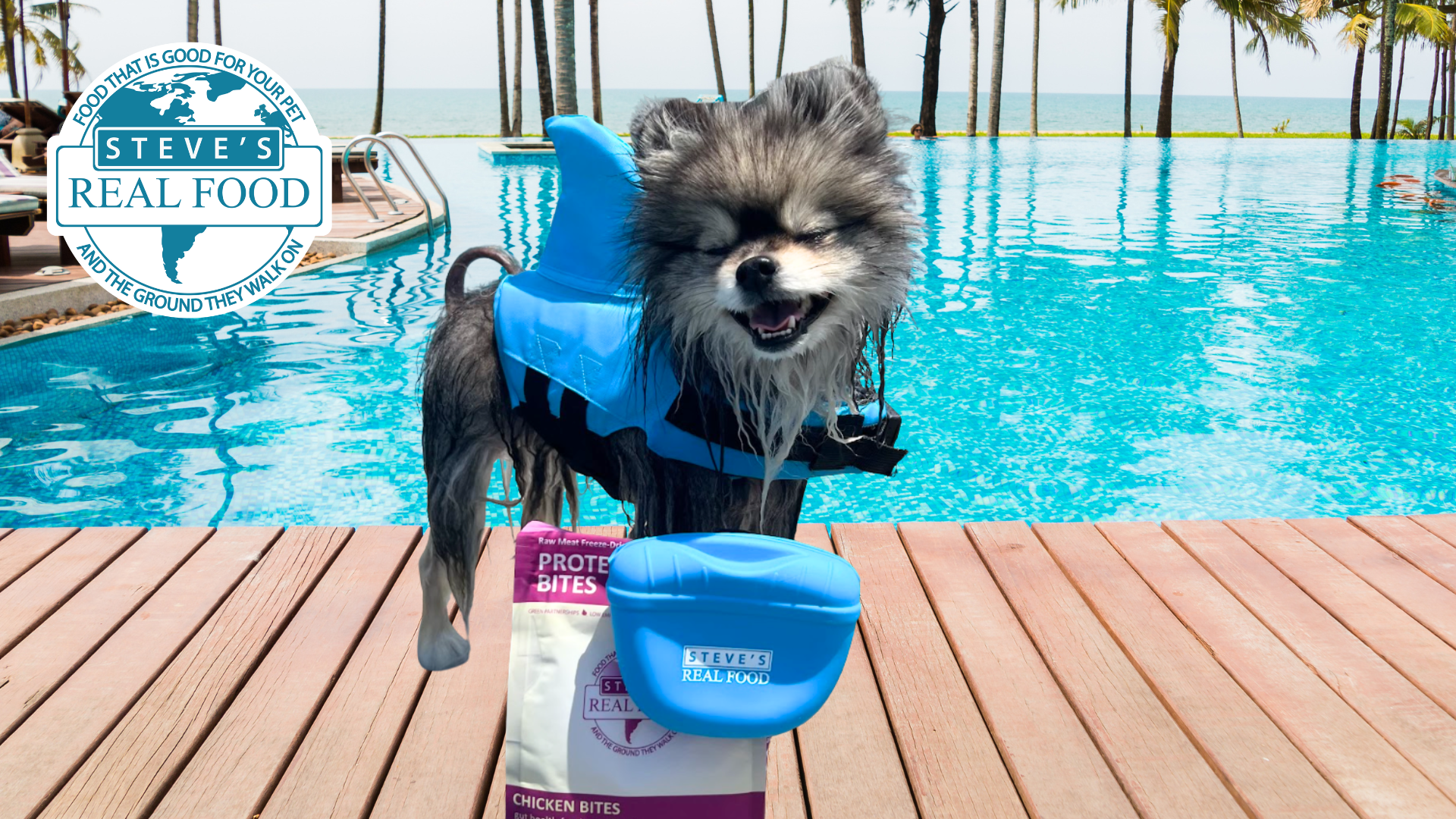Why do I need to supplement a complete and balanced fresh food diet?
Fresh, raw food like Steve’s Real Food contains all the nutrients your dog or cat needs to thrive. But many amazing, beneficial compounds and nutrients in the natural world can benefit your pets in other ways. Each pet is an individual, and some have needs that differ from others. By supplementing a fresh diet with a few extras throughout your pet’s life, you can target issues unique to your pet or work proactively to prevent or delay problems before they start. For example, a German Shepherd you know may be prone to hip dysplasia should get proactive support throughout his life.
Natural, food-based sources of important nutrients can elevate your pet’s diet to meet their specific needs.
Glucosamine
Glucosamine is the most common supplement given to pets as they age due to its purported power to protect joints from the ravages of time. It naturally occurs in several foods and is a major component of cartilage. It is also naturally produced by the body.
Proactivity is key when it comes to supporting the joints in general. It is much harder to repair damage than it is to slow degradation. In the early proactive stages, glucosamine from whole foods is fantastic, but if there is already damage, it may be beneficial to include therapeutic-level supplements. Dogs and breeds who may be susceptible to joint issues should receive extra joint support throughout their lives, and they should be kept lean and fit to reduce stress on joints.
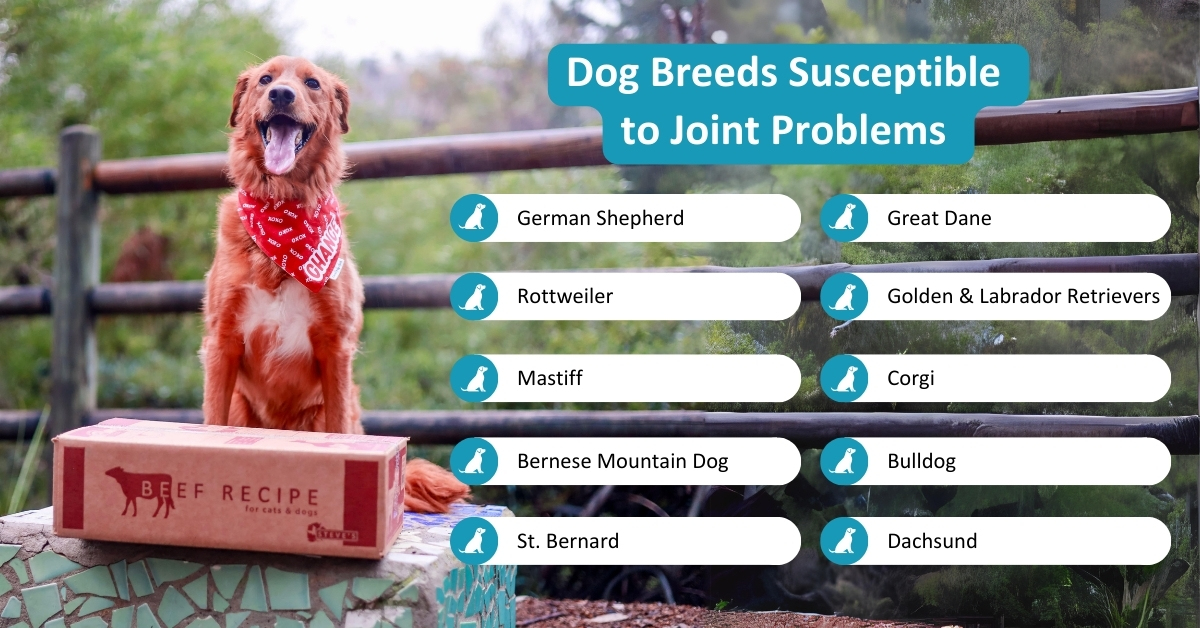
For pets suffering from reduced mobility, glucosamine supplementation should be part of a holistic treatment plan. To learn more, check out this article by Dr. Judy Morgan.
Glucosamine Potential Benefits
In the joints, one of glucosamine’s roles is to stimulate the creation of GAGs (glycosaminoglycans), a major structural component of cartilage. Supplying plenty of glucosamine throughout an animal’s life may allow the body to cushion and protect the joints better. For more information on the role of glucosamine and its synergistic effects with chondroitin, check out this 2017 article published in Open Veterinary Journal.
- Supports the growth of cartilage cells
- Reduces inflammation in joints.
- Reduces pain associated with osteoarthritis
- Supports better mobility and range of motion
How to use glucosamine to benefit your pets
From a young age, pets should receive foods that are good sources of glucosamine and other synergistic compounds such as hyaluronic acid and collagen. These can be included in their daily diet or fed as treats a few times a week. Therapeutic levels of glucosamine can be given daily for older pets, pets susceptible to joint issues, or pets already displaying reduced mobility.
How to choose a glucosamine supplement
When glucosamine is given proactively, many fresh foods provide natural sources of glucosamine and other related beneficial compounds. Rotating sources will provide the broadest range of valuable nutrients.
Natural sources of glucosamine include:
- Raw Chicken Wings: The whole wing contains up to 500mg of glucosamine but will also add additional calories.
- Raw Chicken Feet: A lower-calorie alternative to chicken wings, chicken feet average 450mg of glucosamine per foot.
- Raw Trachea: Beef trachea can contain up to 1400mg of glucosamine per ounce, making it an excellent natural source. Freeze-dried or gently dried is good as well.
- Raw Poultry Necks: Necks contain a decent amount of cartilage and other connective tissue.
- Eggshell Membrane: The thin lining inside eggshells contains collagen (types I, V, & X), glucosamine sulfate, chondroitin, and hyaluronic acid. Powdered eggshell membrane is available, but if possible, look for the NEM trademark or third-party verification.
- Green Lipped Mussels: Contain a wide variety of compounds that may benefit joint health and help ease discomfort.
Choosing a concentrated supplemental form of glucosamine is a bit more complicated.
Clinically, the waters are pretty murky. Research on the efficacy of glucosamine supplements is often contradictory, and whether or not they provide any benefit varies depending on the study. Some studies, such as this 2023 one by Khon Kaen University, admitted they were potentially limited by duration and showed no effects. This 2006 study by UCD Dublin showed benefits starting at the 70-day mark. A 2022 meta-analysis performed by Groupe de Recherche en Pharmacologie Animale du Québec of 72 trials showed “a very marked non-effect of chondroitin-glucosamine nutraceuticals.”
Benefits may depend on the form of glucosamine supplied. Three forms of glucosamine found in supplements are glucosamine HCl, glucosamine sulfate, and crystalline glucosamine sulfate. Of the three, crystalline glucosamine sulfate is the most bioavailable (25%- 44%)2, though it is rare to see in pet supplements. Typically, supplements contain glucosamine HCl, as it allows for the highest concentration of glucosamine in the smallest package.
Research goes back and forth between the effectiveness of the HCl form and the sulfate form, though at this time, more studies have shown benefits from glucosamine sulfate than glucosamine HCl. In one review of studies performed between 2001-2021, “slightly higher chondroprotective effects were determined in the glucosamine sulfate studies comparing to the studies that included the glucosamine hydrochloride formulation (67% vs. 50%, respectively)“. That means that 67% of the studies on the sulfate form showed some benefit, whereas 33% did not. 50% of the HCl studies showed benefit, and 50% did not. Not enough conclusive evidence is available to support one over the other as studies often include other compounds, and both forms are considered to have low bioavailability2.
Anecdotally, many dogs with mobility problems see benefits from supplementing with glucosamine and its friends. There are no reported dangers or side effects, so if you have a dog that needs some extra help, it is absolutely worth trying.
What are some good glucosamine supplements?
We heavily favor rotating food-based sources of glucosamine before mobility becomes an issue.
- Four Leaf Rover makes a Hip & Joint formula made mainly of Green Lipped Mussel and natural eggshell membrane.
- YuMove makes a Joint Care Plus that is highly rated and includes several beneficial compounds for joint health.
Omega-3 Fatty Acids
Omega-3s are essential healthy fats that help support heart and cardiovascular health and help to balance inflammation. They are a natural food component, as is their counterpart, Omega-6 fatty acids. Eating a good balance of omega fatty acids is important, as the two work together to provide balance in the body. Typically, pets and people get too much omega-6 and not enough omega-3, resulting in a balance skewed toward excess inflammation. Omega-3s are delicate and degrade quickly under normal conditions or high-heat cooking. Pets eating dry or canned foods may benefit from an omega-3 supplement to help restore balance.
There are three primary omega-3 fatty acids:
- ALA (alpha-linolenic acid) is mainly found in plants. Small amounts can be converted to DHA and EPA, but it’s not a practical source of these valuable fats. They should come directly from food instead.
- DHA (docosahexaenoic acid) – Found in seafood. Essential to overall health.
- EPA (eicosapentaenoic acid) – Also found in seafood, works alongside DHA and is just as essential.
Omega-3 potential benefits
Omega-3 sources contribute to balance in your pet’s body. If they are getting too much omega-6 in their diet, adding additional sources of omega-3 can help control excess inflammation. For more information, check out this article written by Dr. Judy Morgan.
- Balance inflammation.
- Improve skin & coat.
- Support eyes, heart, immune system, joints, kidneys, brain, and cognitive function.
- Reduce allergy symptoms.
- Support mood.
How to use omega-3s to benefit your pets
Omega-3s are found in a variety of fresh foods. Seafood tends to be relatively high in omega-3s, so including some fresh or lightly processed seafood a few times a week is the best way to naturally boost omega-3 intake. You can also give fish, algae, or krill oil capsules or liquid supplements, but verifying quality when using an oil is essential.
For most pets, feeding a diet rich in omega-3s will reduce the need for supplemental omega-3. Fresh, raw foods like Steve’s Real Food are typically excellent sources of omega-3, and because the food remains frozen until ready to use, the delicate fatty acids don’t degrade.
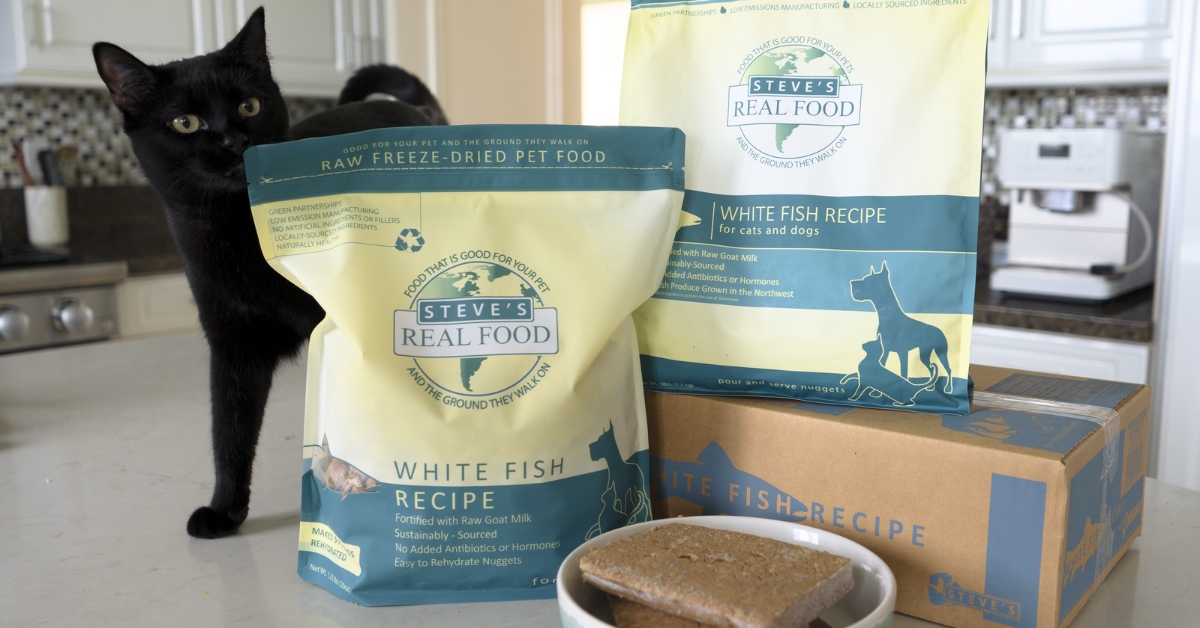
How to choose an omega-3 supplement
Seafood provides many wonderful nutrients, but unfortunately, it is also a common source of heavy metals and other contaminants. When purchasing seafood, choose wild-caught, never farmed, and sustainably sourced.
- Small, oily fish like sardines, smelt, and anchovies are terrific sources of omega-3 and typically low in mercury. If you choose fresh, raw fish, you must freeze it for a few weeks to kill any parasites. Alternatives are freeze-dried or canned in water.
- Green-lipped mussels are a wonderful source of omega-3 and many other beneficial compounds. Go for freeze-dried or air-dried mussels, as heat will destroy some of the good stuff. Sometimes, the fats are extracted before the meat is sold, so make sure dried mussels are at least 6% fat before purchasing.
- Fish oils range from clean and beneficial to downright damaging, and often, it’s difficult to tell one from the other. They are also unstable and will start to go rancid quickly at room temperature when exposed to oxygen and light, which is why we love using real, whole seafood instead. Here are a few guidelines for fish oils, but we highly recommend doing your research before buying one:
- No plastic bottles or bottles that aren’t lightproof.
- Cold-processed.
- Third-party tested for contaminants, heavy metals, and oxidation.
- Contains both EPA and DHA. Typically, higher levels of EPA are desirable for adult dogs.
- Don’t choose the “concentrate” or the ethyl esters form; these reduce other beneficial compounds in the oil.
What are the best Omega-3 supplements?
Again, we like using fresh or freeze-dried seafood rather than oils or capsules for our pets. If you want to boost your pet’s omega-3 intake, choose a variety of seafood and work it into its food a few times a week.
- Wild-caught frozen smelt are often available in the freezer at grocery stores, but look for the Marine Stewardship Council seal to ensure they’re sustainably harvested.
- Freeze-dried New Zealand Green Lipped Mussels are widely available online and at local retailers. Verify that the fats haven’t been extracted and that the mussels were processed without heat.
Mushrooms
Mushrooms provide a wide range of benefits, both for pets that need targeted help and otherwise healthy pets who just want to stay that way. Beneficial compounds like beta-D-glucans are typically extracted with hot water or alcohol and reduced to a powder or a tincture.
Mushroom Potential Benefits
Benefits depend on mushroom species, and many are still being researched. For a deeper dive, check out this article published by Real Mushrooms.
- Protect the skin, brain, organs, bones, and heart
- Support immune system balance
- Reduce allergy symptoms
- Improve digestion
- Rich source of antioxidants
- Improve focus and cognition
- Reduce anxiety
- Excellent source of nutrients
How to use mushrooms to benefit your pets
For healthy pets, you can rotate between mushroom species and add them to meals a few times a week. Powdered extracts sprinkled onto food or mixed into broth are the easiest way to reap the benefits of these fantastic fungi.
To target specific issues, you can feed mushroom extracts daily with meals. Check out this article by Dr. Judy Morgan to find which species may benefit your dog.
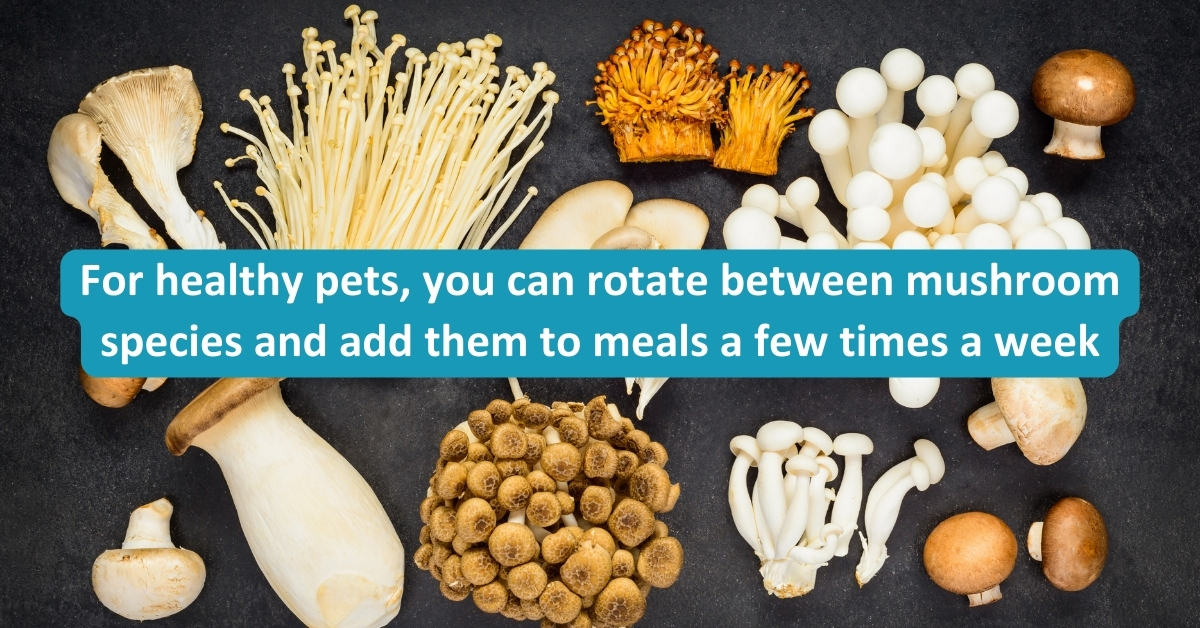
How to choose a mushroom extract
Hundreds of mushroom extracts are available, so how do you know you’re picking a good one? Unfortunately, many of the products on the market are not that great. Here’s what to look for:
- Generally, you want mostly or all fruiting body. That’s the part of the mushroom that looks like a mushroom. The other part is called the mycelium, which you can think of as the roots. The mycelium becomes intertwined with whatever the mushroom is grown on, often rice, oats, or wood. The mycelium of most species contains significantly lower amounts of active compounds than the fruiting body, although there are exceptions; reishi mushrooms are a great example. The compounds in the mycelium of reishi mushrooms are prized for their benefits.
- Beta-glucan levels. Ideally, the mushroom supplement should contain 20% beta-glucans or more if you are targeting specific benefits. If it’s not listed on the site, try contacting the manufacturer. Mycelium is higher in alpha-glucans and low in beta-glucans, so if you choose an extract made with the fruiting body, it should be higher in beta-glucans. Third-party lab testing is a huge plus. This article by Real Mushrooms goes deeper into the subject.
- Go for Certified Organic to minimize the risk of residual pesticides or herbicides.
What are the best mushroom extracts?
We like several, but there are so many versions available that we’ll keep it to two for simplicity’s sake. We have researched these brands and have personal experience using them for our pets and ourselves. There are many other fantastic options available.
- Real Mushrooms offers individual species and blends for pets and humans. Their extracts are third-party verified and organic. The company offers many resources for learning about mushrooms.
- Super Shrooms by Super Snouts is an excellent blend of seven highly-valued mushrooms in one easy-to-use powder.
CBD Extracts
From overall health to pain relief to anxiety, CBD deserves a place in every pet’s cabinet. CBD is extracted from hemp using a variety of methods, including alcohol, CO2 + pressure, and oil. Hemp contains a variety of compounds that help CBD work more effectively, referred to as the entourage effect. Unlike marijuana, hemp contains little to no THC, so extracts made from hemp are not psychoactive. Pets cannot handle the same levels of THC that humans can.
CBD potential benefits
CBD and related compounds like CBG and CBN can benefit pets in various ways. This article, which Cornell University published, highlights some encouraging research. Many other potential benefits not listed here are anecdotal and require more research.
- Reduce anxiety.
- Reduce pain.
- Reduce discomfort in arthritic pets.
- Reduce seizures in dogs with epilepsy.
- Reduce itching in dogs with atopic dermatitis.
How to use CBD to benefit your pets
CBD can be given daily or on an as-needed basis, such as soreness after a long day at the park or anxiety about inclement weather. If your pet is new to CBD, they may take several doses before they respond to it. When dealing with situational anxiety, it’s best to administer CBD at least an hour before the event – before the storm or fireworks begin. It can still be beneficial if the storm has already started; for example, if your dog wakes you up in the middle of the night, it will just take some time to kick in.
Oils are typically the best way to administer CBD. If possible, put the oil directly into your dog or cat’s mouth, in the cheek, along the gumline, or under the tongue. That may be easier said than done, especially for cats. A handy trick is to poke a hole in a freeze-dried chicken heart or a piece of Steve’s freeze-dried food and allow the oil to soak in. You can also find treats infused with CBD, but controlling dosage is easier with CBD oil.
How to choose a CBD extract
There are countless options for CBD, so it’s important to evaluate your options carefully. Here are the important things to consider:
- Look for Full Spectrum Hemp Extract, meaning many of the compounds from the hemp plant are included rather than just CBD. The other compounds found naturally in hemp can improve the effectiveness of CBD and provide their own benefits as well.
- Check the Certificate of Analysis. Hemp is a fantastic bio-accumulator, meaning it will collect all sorts of things from the soil, including heavy metals or compounds from chemical spills. It is so effective that it is often used to clean contaminated soils and then processed and sold as CBD. It’s essential to verify that the oil you’re purchasing is clean. Also, look for pesticide, fungicide, or herbicide residue, which should be included in the report.
- Prioritize buying Certified Organic hemp extract. Hemp grown organically typically contains a better full spectrum of compounds and reduces your risk of pesticide and herbicide contamination.
- Verify the amount of CBD in the product. The number should also be in the Certificate of Analysis. Unfortunately, it is common for hemp extracts to contain less CBD than advertised, so check the report. Also, make sure THC, if present, is at very low levels, ideally less than 0.3%.
- If your pet doesn’t respond well to one CBD extract, many pets do better on one or another because of the variety of other compounds at play.
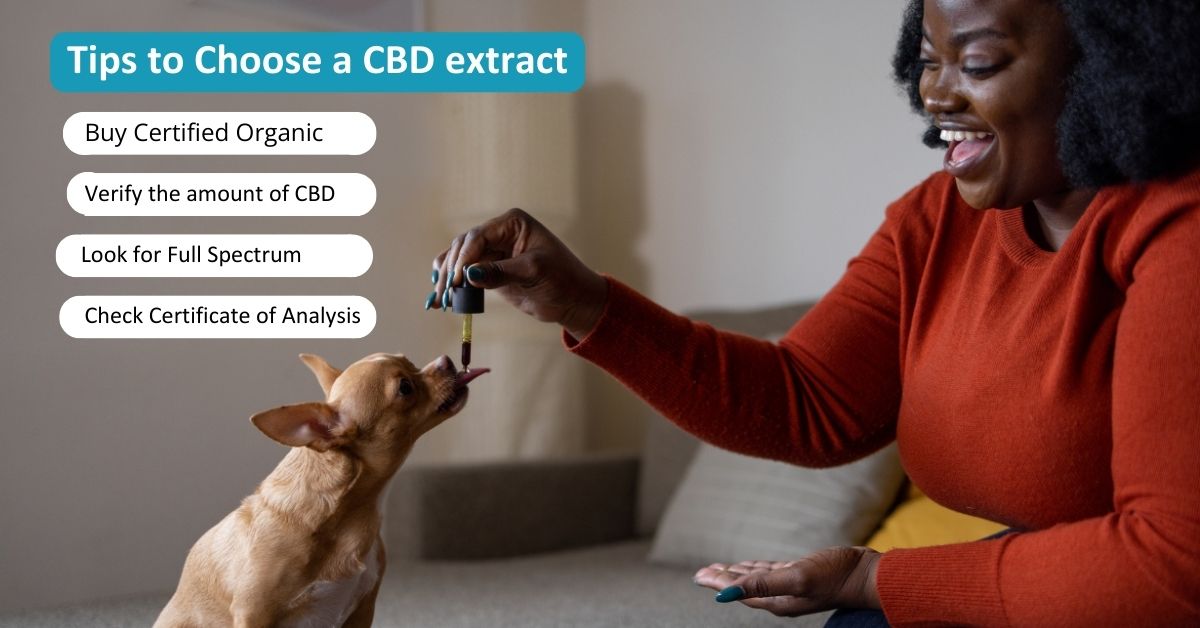
What are the best CBD extracts?
Again, there are so many varieties of CDB extracts on the market that it’s impossible to list all of the good ones here, so we’ll just list two. Bear in mind that every pet is an individual, and although these work well for our pets, you may need to explore other options to find the perfect match for yours!
- Pet Releaf makes an excellent Full Spectrum Hemp Extract that many pets respond well to. They test every batch they produce and own the farm where their hemp is organically grown. They use Organic MCT oil as the carrier oil.
- Super Snouts makes Broad-Spectrum Hemp Extracts from organically grown hemp. They use Organic Virgin Hemp Seed oil as the carrier oil.
Collagen
Collagen is the body’s most common type of protein, making up 30% of overall protein. There are 29 known types of collagen, but most collagen in the body is types I, II, III, IV, and V. Among other things, collagen helps replace dead skin cells, is a significant component of tendons and ligaments, helps maintain the shape and structure of the body, protects and anchors the organs, and is crucial to teeth, bones, blood vessels, cartilage, and eyes. Collagen is one of the main components of cartilage and is beneficial for protecting the joints.
Collagen potential benefits
When a pet eats collagen, it is broken down into its base components: peptides and amino acids. They can then use these building blocks as energy, to manufacture other proteins, or to make collagen. Many supplemental forms of collagen are already broken down into peptides. Supplying ample amounts of multiple collagen building blocks is a great way to support your pet, though not all of the collagen they eat will be used for manufacturing collagen. The body will produce its own, even without supplemental collagen, but production slows with age.
How to use collagen to benefit your pets
Collagen can be added from multiple sources a few times a week for healthy pets. Pets who need support may benefit from daily added collagen. Including different sources and types of collagen in your pet’s rotation is ideal. Feeding a food rich in antioxidants like Steve’s Original Recipes is important to protecting collagen and keeping the body’s repair processes running smoothly. Vitamins A & C, zinc, iron, and copper are all needed for proper collagen production, so feeding a fresh, nutrient-rich diet is crucial.
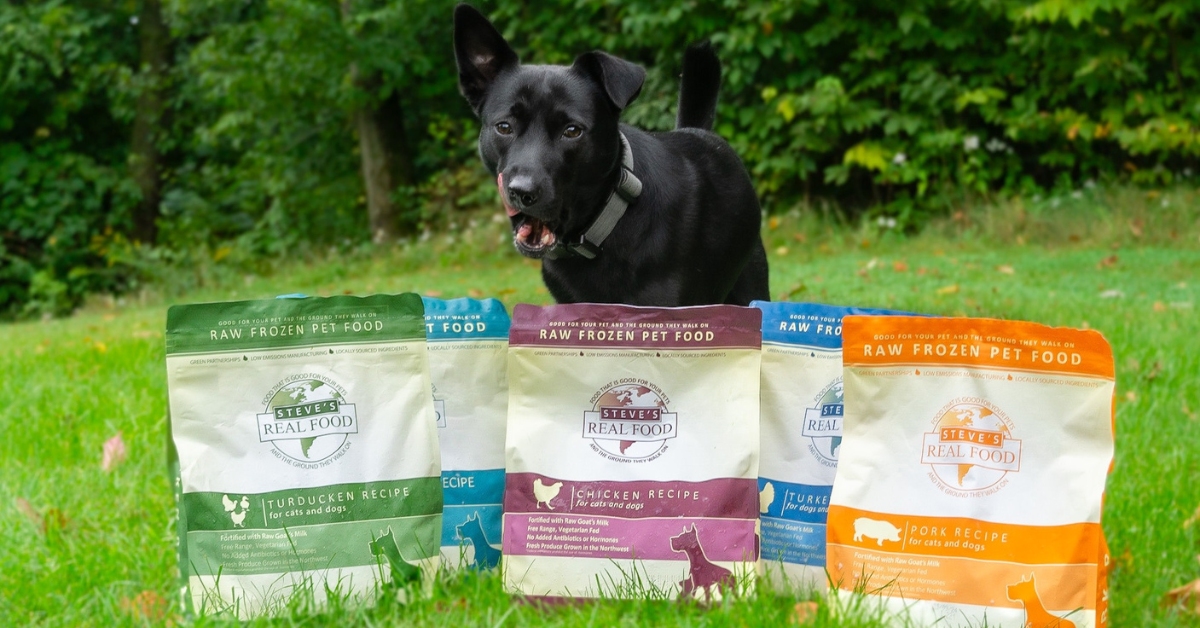
How to choose a collagen extract
The best sources of collagen are cartilage-rich foods. Chicken feet, poultry necks, eggshell membranes, and many foods that contain glucosamine also provide collagen. Bone broth is a standard favorite—cooking down a broth made from bones and connective tissue creates a gelatinous broth rich in collagen. There are many easy recipes for bone broth, like this one from Dr. Judy Morgan.
In supplemental form, there are a few common sources of collagen:
- Bovine – usually from cows. High in types I and III, look for grass-fed or pasture-raised.
- Marine – typically from fish: This is also high in types I and III. Choose wild-caught and look for the Marine Stewardship Council logo or other sustainability verification.
- Poultry – often in the form of bone broth, chicken is a good source of type II collagen, which is thought to benefit joint health.
- Hydrolyzed – may come from any of the three previous sources and has been broken down into amino acid & peptide form.
When purchasing collagen in supplemental form, look for supplements without any fillers or additives. Examine the brand’s transparency about its sourcing and processing, and ideally, find one that is third-party verified for purity and quality. Finally, look for several types of collagen present in the supplement to provide a broader range of benefits.
What are the best collagen extracts?
Incorporate a variety of collagen sources in the form of real foods. Homemade bone broth is an excellent source that is inexpensive and easy to make.
- Fera Pets is a company we love. They recently added a collagen supplement to their product line, and we can’t wait until it’s available! It’s a blend of several different types and is easy to add to meals.
Prebiotics, Probiotics, and Postbiotics
If you counted all the cells in your pet’s body, only 10% would actually belong to them! The other 90% are microbes living in and on your pet’s body. Your dog or cat and their microbes ideally live in symbiotic harmony.
Think of your pet’s body as a landscape. Their own cells are the environment. They give shape and provide the basic necessities for life. The microbes are everything living in the environment: the plants, animals, insects, humans, grasses, and trees. The creatures and the environment interact in ways that are sometimes harmonious and mutually beneficial and sometimes not. The environment shapes the types of creatures that live in it, and in turn, the creatures shape, nurture, or potentially poison the environment.
The microbes that support your pet’s health:
- Probiotics are the good microbes, an entire ecosystem living in and on your pet. It’s crucial to encourage diversity in this ecosystem and give the good microbes the right foods and plenty of reinforcements. These good microbes will support your pet and crowd out pathogenic microbes that may harm them. Pets should eat a diet rich in probiotics to reseed and nurture diverse microbe communities continually.
- Prebiotics are food for the microbes. Choose the right foods and species-appropriate, beneficial microbes will flourish. Choose the wrong foods, and the microbes that grow instead may provide zero benefits, interrupt those trying to provide benefits, or even harm your pet.
- Postbiotics are the beneficial compounds that the microbe ecosystem creates. These include hormones, neurotransmitters, nutrients, immune-boosting compounds, and more. A food rich in prebiotic fiber and thriving probiotics will also contain postbiotics.
Prebiotics, probiotics, and postbiotics potential benefits
Animals would naturally eat a diet rich in species-appropriate, local microbes. Many processed foods lack probiotic diversity and feed the wrong types of microbes, resulting in a microbial imbalance and lack of diversity in the gut. In animals suffering from imbalance, getting things back on track will affect and improve the entire body. It may reduce or alleviate symptoms of imbalance, such as digestive issues, skin issues, behavioral issues, and more. For otherwise healthy animals, supporting healthy microbial balance nurtures their entire system.
- Supports digestion
- Supports healthy skin
- Supports strong immune function
- Supports cognitive function and learning
- Supports mood and energy levels
- Reduces allergen sensitivity
How to use prebiotics, probiotics, and postbiotics to support your pet
Sources of diverse, species-appropriate prebiotic fiber will support microbe balance and should be part of each meal. Meals may look different for dogs and cats. Dogs eat slightly more fruit and vegetables, whereas cats eat an almost exclusively meat, organ, and bone diet. Check out our Steve’s Original for dogs & cats and our Quest for cats for ideal diets.
Probiotic microbes are an important food component and should be included in each meal. Our formulas contain beneficial microbes from the produce and the goat milk yogurt we include in our recipes. Additional beneficial microbes may encourage diversity. We recommend sourcing these from fresh and fermented foods rather than lab-grown supplements. Pets will also come into contact with diverse groups of local microbes while playing outside.
Postbiotics provide immediate nutrients and compounds to your pet. They can be especially beneficial for pets suffering from imbalance, though they will benefit every pet who eats them.
A source that contains pre, pro, and postbiotics is called a synbiotic. Fermented foods, like this superfood topper from Gussy’s Gut, are examples of synbiotics.
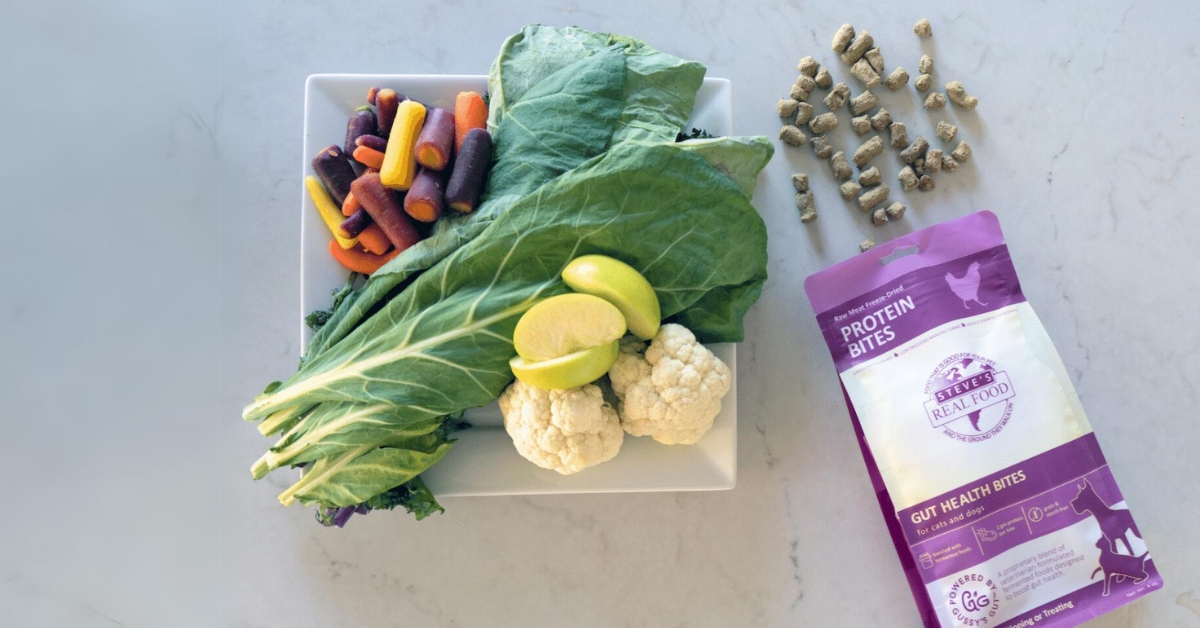
How to choose a probiotic supplement
Your pets will collect microbes everywhere they go: rooting around in the dirt, meeting other dogs, eating microbe-rich foods and treats, and licking their paw pads after a walk. The important thing is to feed the right foods so that the microbes that will benefit your pet the most can flourish. Foods and treats should be low in carbohydrates, high in moisture, and contain natural sources of prebiotic fiber.
Include microbially rich foods to add more diversity to the gut. It’s easy to ferment goat milk or locally grown veggies at home or use prepared versions like our fermented Protein Bites. To learn more about the benefits of fermented foods, check out our interview with Dr. Ian Billinghurst, the Father of Raw, and Rob Ryan, the Founder of Gussy’s Gut. We use a wild-fermented blend from Gussy’s Gut in our Protein Bites.
A little locally sourced raw honey is an excellent addition to your dog’s bowl that can also reduce allergy symptoms. When it is locally sourced, raw honey contains pollen that is specific to your area in a less reactive form. Your dog’s immune system may learn that it is harmless and doesn’t require an allergic reaction. To learn more about how the microbial world affects allergies, check out our blog, How Diet and Environment Impact Allergies in Dogs and Cats.
What are the best probiotic extracts?
Most probiotic supplements contain microbes that are more specific to humans than to dogs. Because limited probiotic strains are available from laboratories, many companies will just repurpose human probiotics for pets. There are a few exceptions. Some companies produce pet-specific probiotics, which is essential, as pets and humans have vastly different microbial compositions in our gut.
- AnimalBiome offers microbiome testing and analysis and creates dog- and cat-specific probiotics.
- Native Microbials creates purpose-driven blends of microbes for dogs and cats to address specific issues.
- Adored Beast Apothecary has several blends of species-specific microbes and prebiotics originally sourced from healthy dogs, cats, and even wolves.
Combining a raw diet with carefully chosen supplements
By complementing their meals with targeted supplements like collagen, glucosamine, CBD, mushrooms, and omega-fatty acids, you’re not just providing nutrition; you’re nurturing their well-being from the inside out. These supplements offer a holistic approach to support joint health, immune function, skin and coat health, and overall vitality, ensuring that your furry friends thrive at every stage of life. With a thoughtful combination of a raw diet and carefully chosen supplements, you’re empowering your pets to live their happiest, healthiest lives by your side.
 Beef
Beef Chicken
Chicken Whitefish
Whitefish Pork
Pork Lamb
Lamb Turkey
Turkey Turducken
Turducken All Protein
All Protein Beef
Beef Chicken
Chicken Whitefish
Whitefish Pork
Pork Lamb
Lamb Turkey
Turkey Duck
Duck All Products
All Products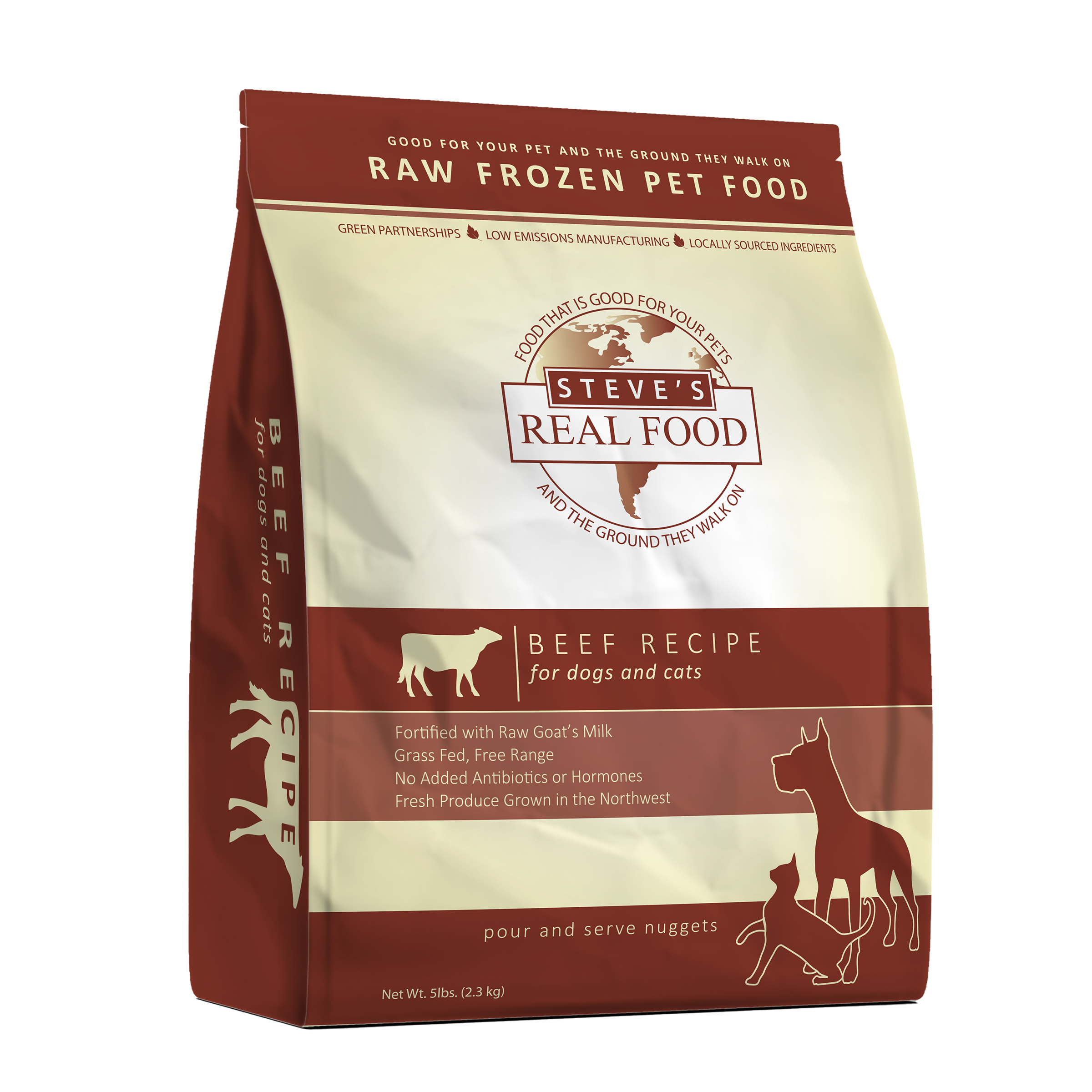 Frozen Raw Pet Food
Frozen Raw Pet Food
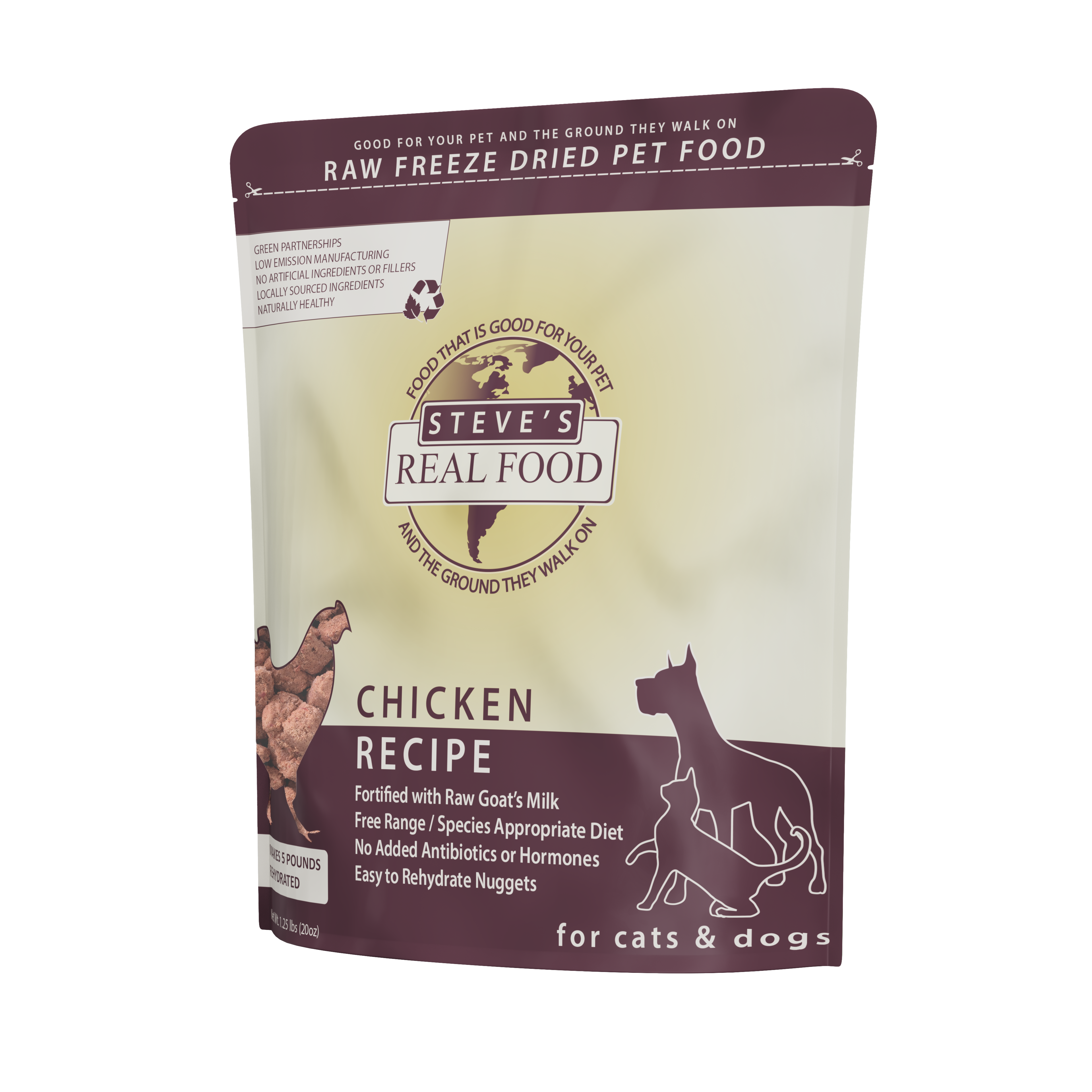 Freeze Dried Raw Pet Food
Freeze Dried Raw Pet Food
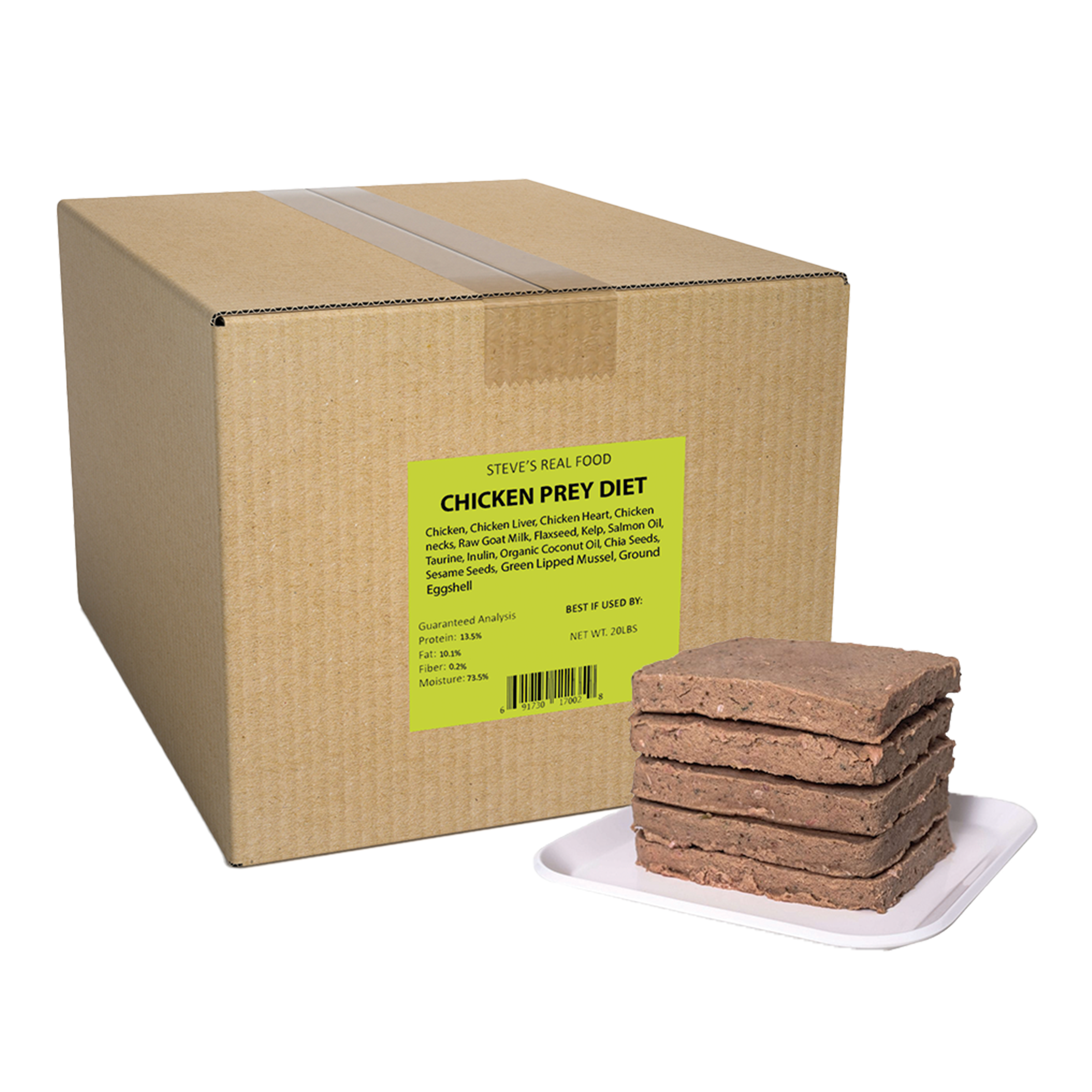 Frozen Prey Diet
Frozen Prey Diet
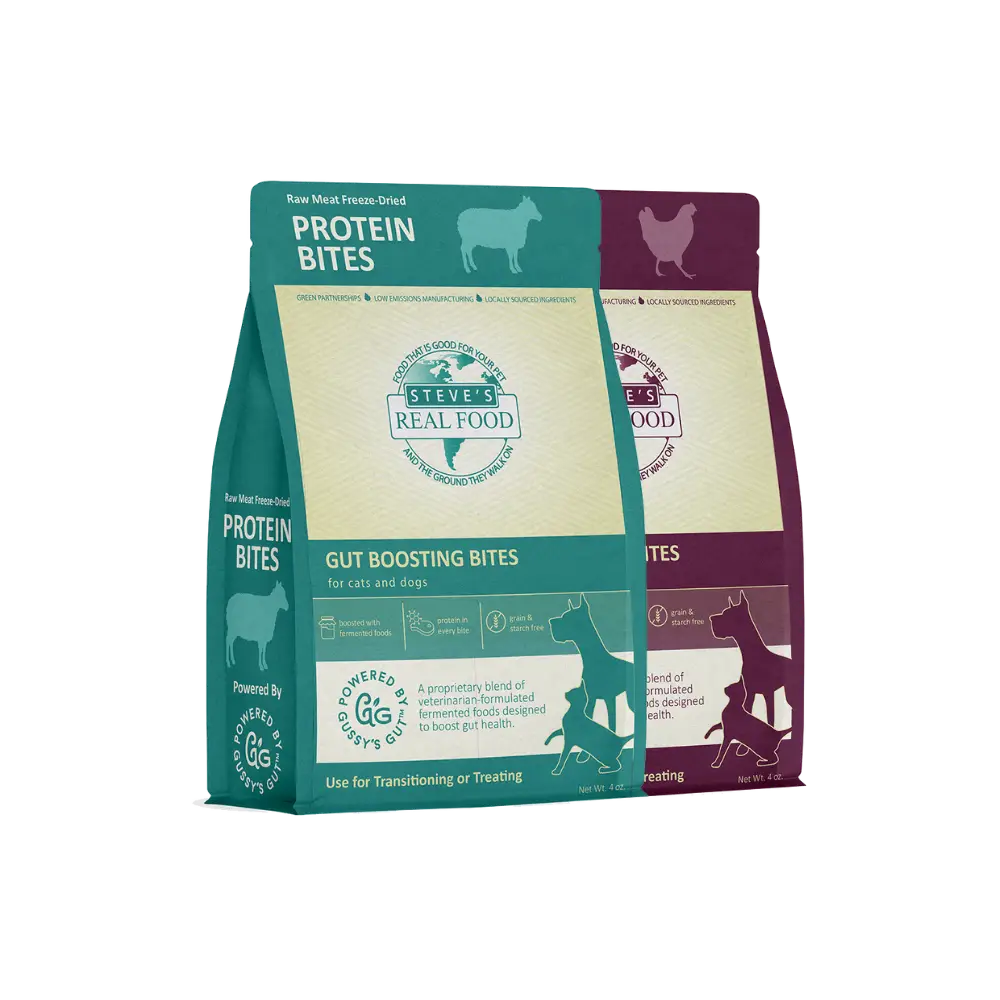 Freeze Dried Protein Bites
Freeze Dried Protein Bites
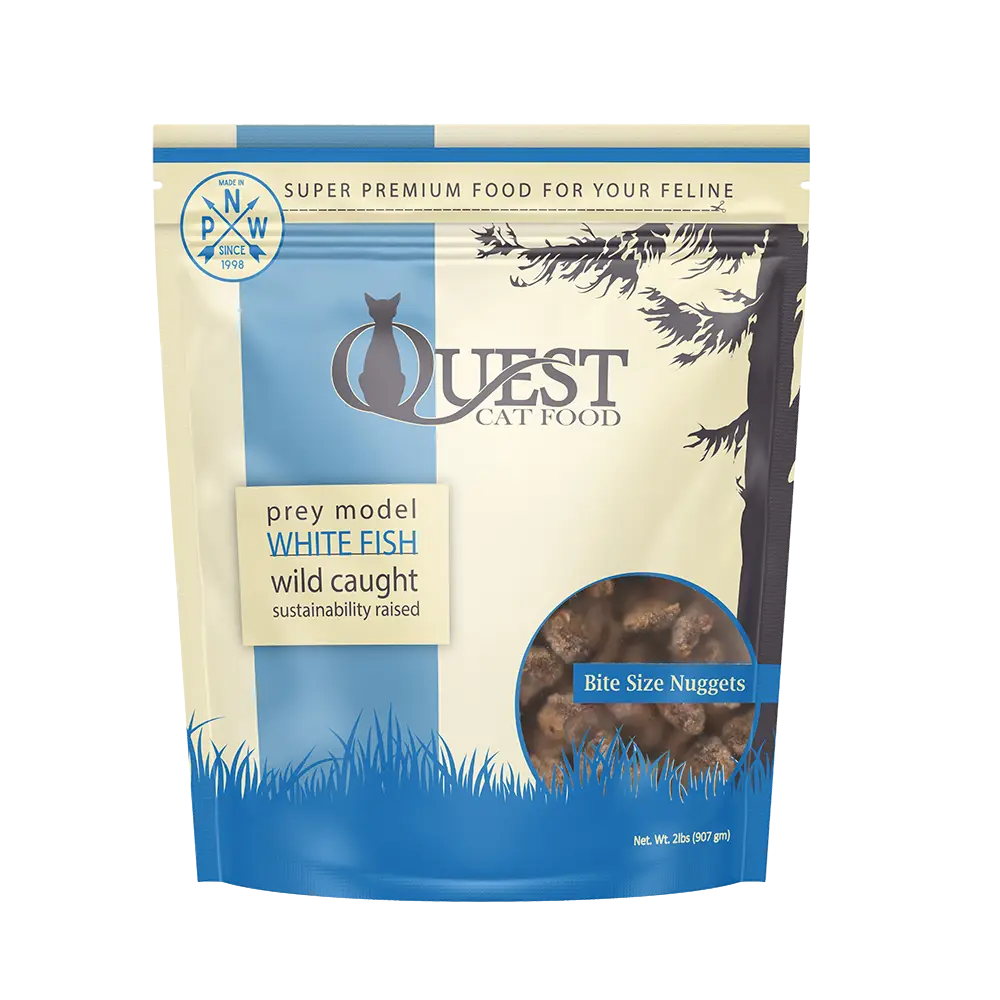 Frozen Quest
Frozen Quest
 Freeze Dried Quest
Freeze Dried Quest
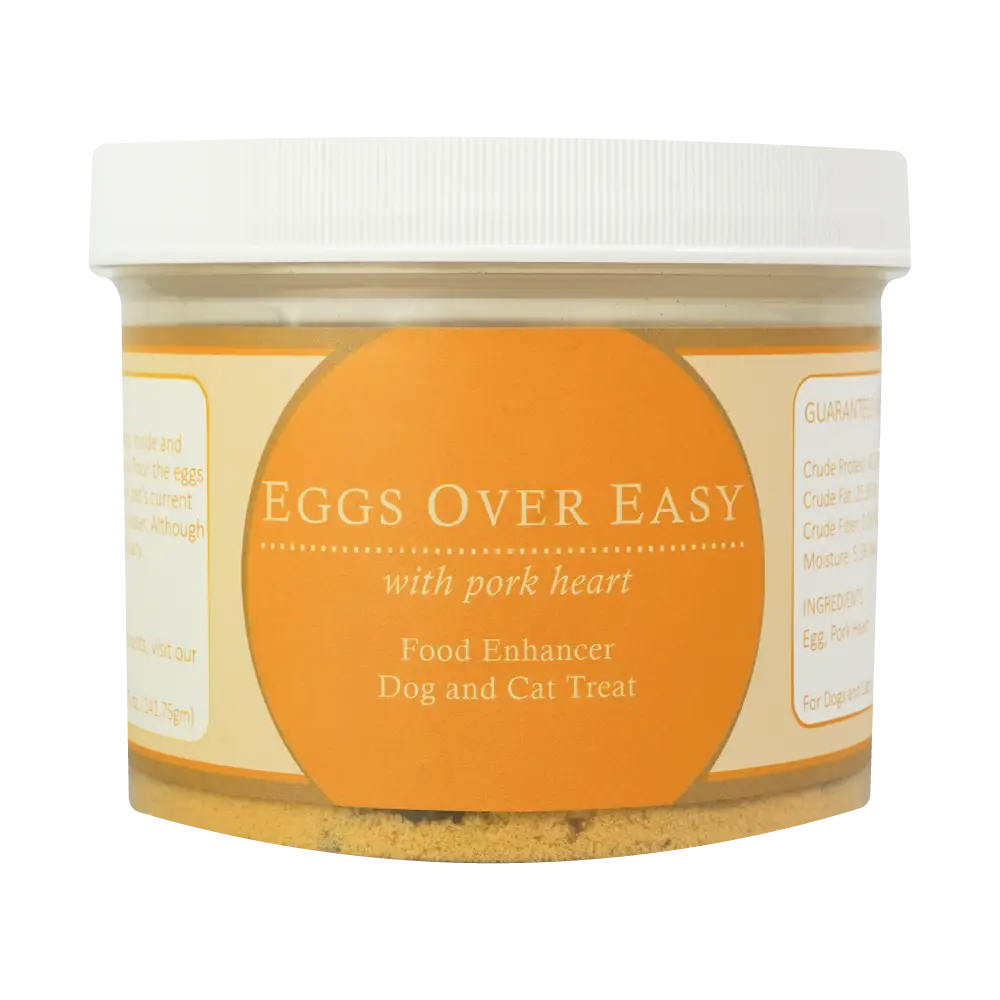 Eggs over Easy
Eggs over Easy
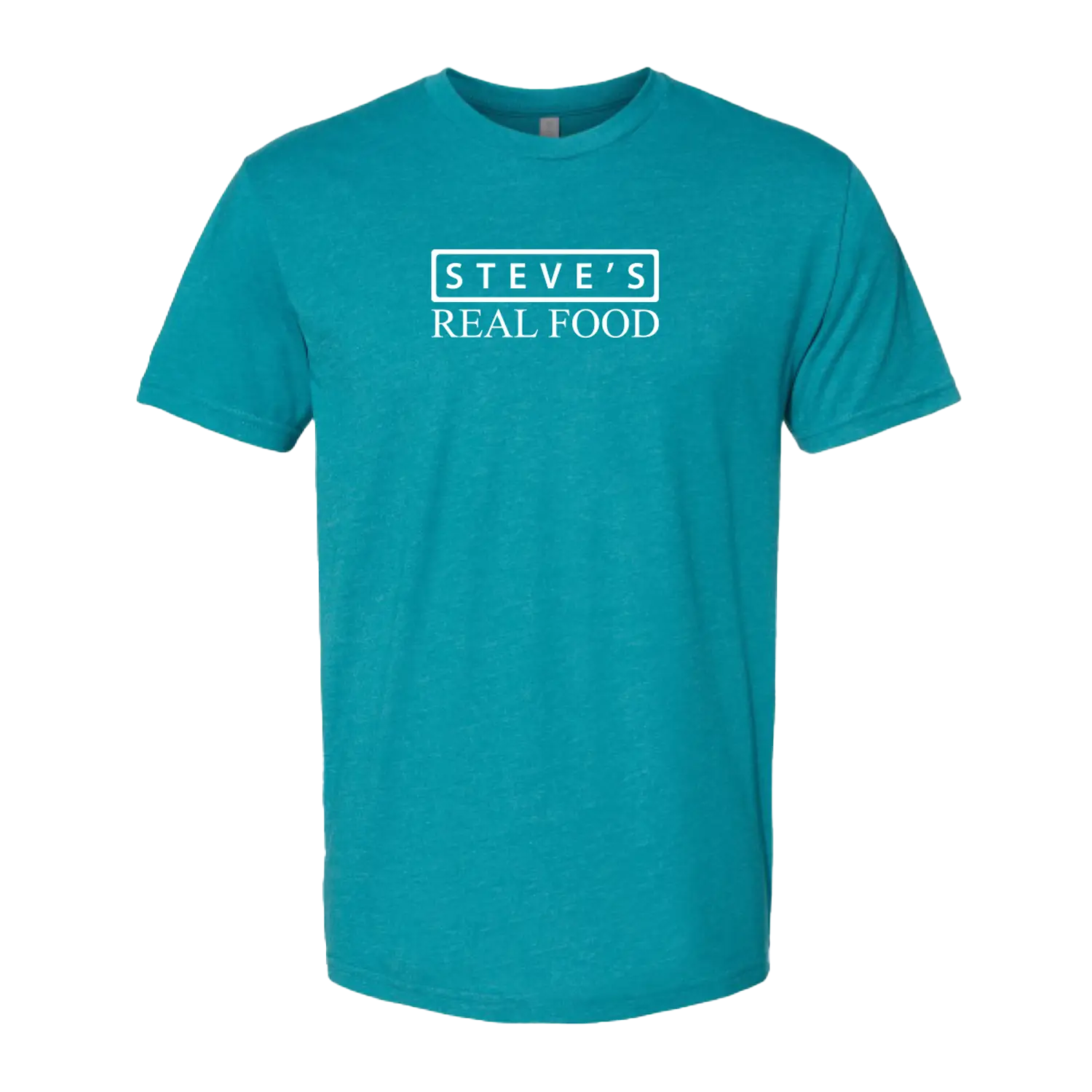 Steve's Merch
Steve's Merch 